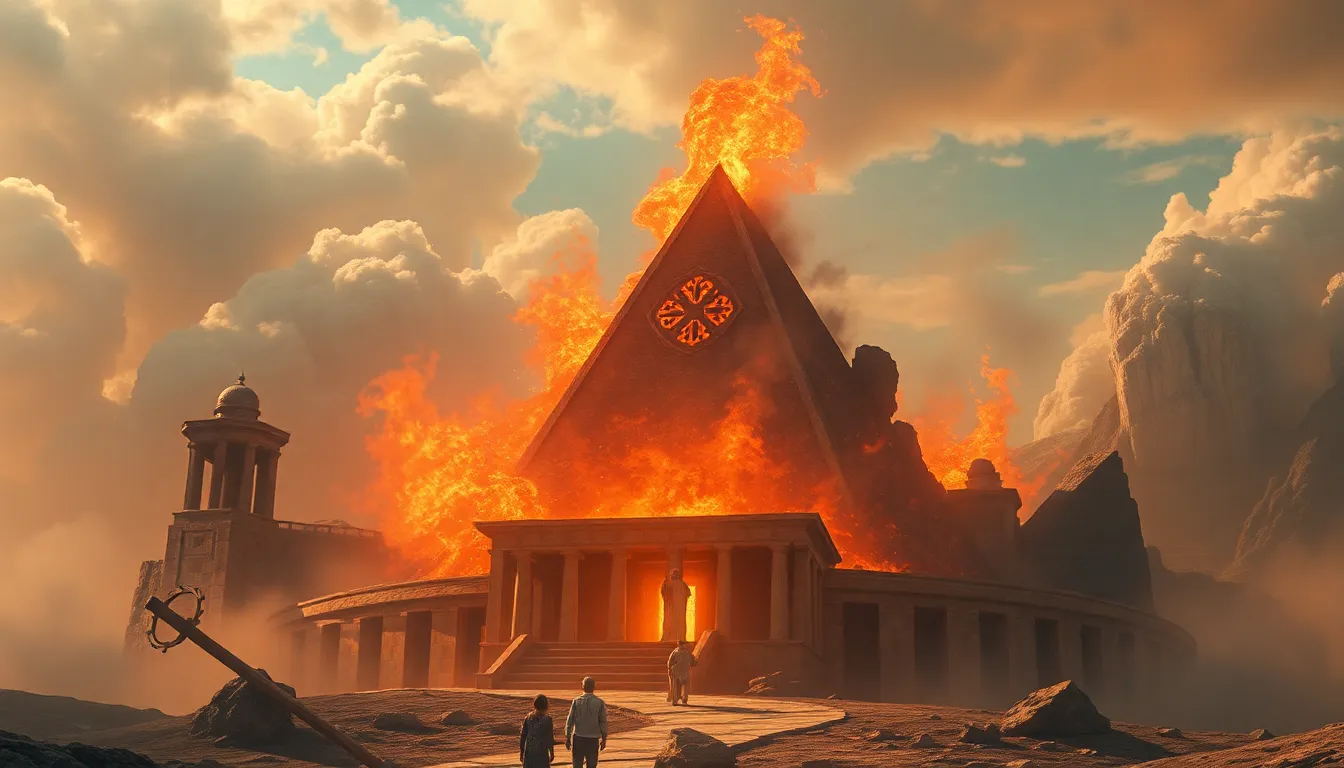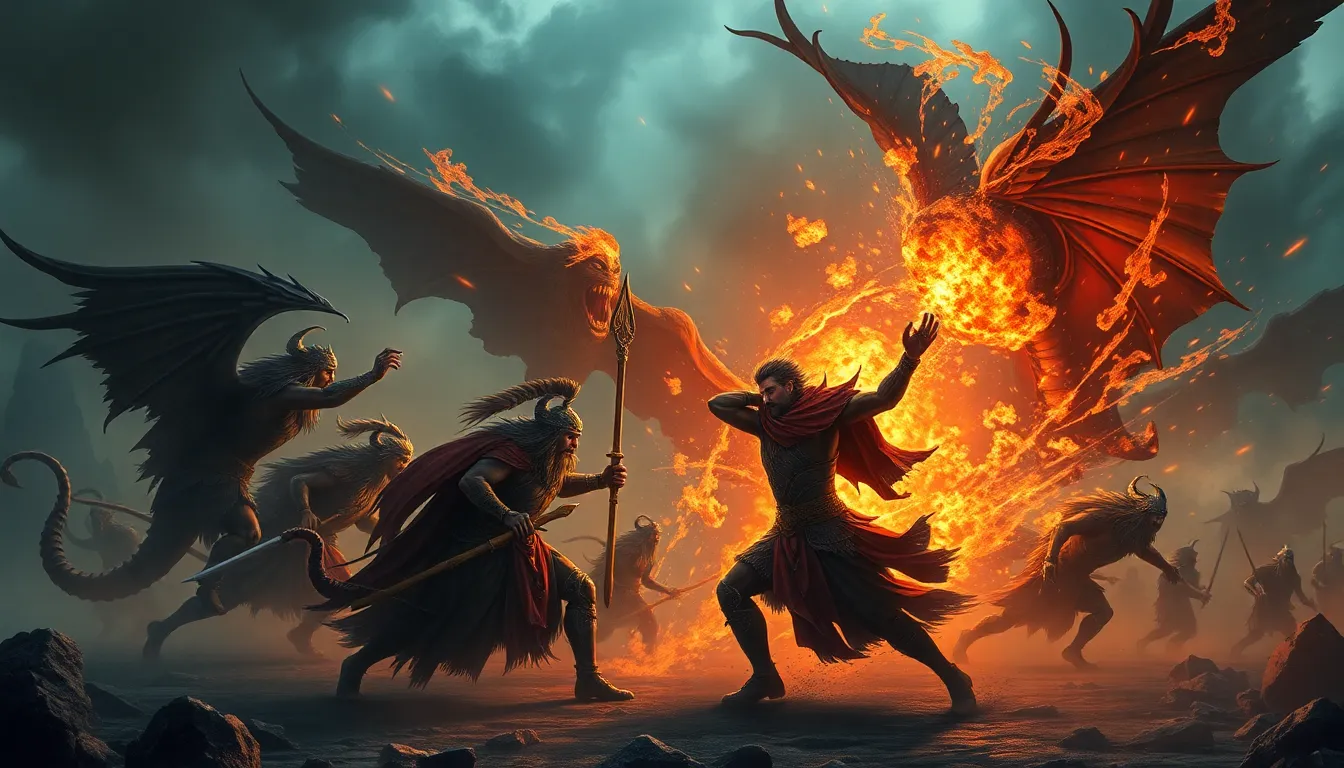The Myths That Predict the Apocalypse: A Comprehensive Guide
I. Introduction to Apocalyptic Myths
Apocalyptic myths are narratives that describe the end of the world or a cataclysmic event leading to a significant transformation of society. These myths often stem from religious, cultural, and historical backgrounds, reflecting humanity’s fears and hopes regarding the future.
Throughout history, apocalyptic myths have held significant meaning, shaping cultures and influencing societal behaviors. They serve as cautionary tales, providing moral lessons or warnings about human behavior and the consequences of societal actions.
This article aims to explore various apocalyptic myths from ancient civilizations to modern beliefs, examining their implications, psychological effects, and the role of media in shaping these narratives. We will also analyze notable predictions and their outcomes, debunk common myths, and discuss the future of apocalyptic beliefs in a rapidly changing world.
II. Ancient Civilizations and Their Doomsday Prophecies
A. The Mayan Calendar and the 2012 Phenomenon
The Mayan calendar gained global attention when some interpreted its end date of December 21, 2012, as a prediction of the apocalypse. This date sparked widespread panic and speculation about catastrophic events. However, Mayan scholars clarified that the end of the calendar cycle did not signify the end of the world but rather a transition to a new era.
B. The Prophecies of Nostradamus
Nostradamus, a 16th-century French astrologer, is famous for his cryptic verses that many believe predict various catastrophic events, including wars and natural disasters. His prophecies have been interpreted in countless ways, leading to both fascination and skepticism. Key themes include:
- The rise and fall of leaders
- Natural disasters
- Religious conflicts
C. Zoroastrian Eschatology: The Battle Between Good and Evil
Zoroastrianism, one of the world’s oldest religions, presents a dualistic view of the world where a cosmic battle between good (Ahura Mazda) and evil (Angra Mainyu) culminates in a final judgment. The belief in a savior figure, Saoshyant, who will resurrect the dead and purify the world, illustrates the Zoroastrian perspective on the apocalypse as a transformative event rather than a complete destruction.
III. Religious Texts and Their Apocalyptic Visions
A. The Book of Revelation in Christianity
The Book of Revelation, a significant part of the New Testament, describes prophetic visions of the end times, including the return of Christ, the final judgment, and the establishment of a new heaven and earth. Its vivid imagery has inspired countless interpretations and artistic expressions over the centuries.
B. Islamic Eschatology: Signs of the Day of Judgment
In Islam, the Day of Judgment (Yawm al-Qiyamah) is a central belief, with various signs marking its approach. These include moral decay, natural disasters, and the appearance of figures such as the Mahdi and Isa (Jesus). The Quran provides descriptions of resurrection and accountability, emphasizing the importance of righteous living.
C. Hindu Cycles of Creation and Destruction
Hindu cosmology describes a cyclical understanding of time, with ages (Yugas) that degrade in morality and spirituality. The current age, Kali Yuga, is characterized by chaos and moral decline, leading to eventual destruction and renewal. This cyclical view contrasts with linear apocalyptic narratives, offering a perspective of ongoing rebirth and transformation.
IV. Modern Myths and Contemporary Doomsday Predictions
A. The Rise of Survivalist Movements
In recent decades, survivalist movements have gained traction, fueled by fears of societal collapse due to various factors such as economic instability, political unrest, and natural disasters. These groups often prepare for an impending apocalypse by stockpiling supplies and advocating for self-sufficiency.
B. The Role of Technology in Apocalyptic Scenarios
Modern technology has introduced new apocalyptic scenarios, including artificial intelligence, nuclear warfare, and bioengineering. The potential consequences of these advancements have led to widespread anxiety, prompting discussions about ethical considerations and global governance.
C. Climate Change: The New Apocalypse Narrative
Climate change has emerged as a significant contemporary apocalyptic narrative, with projections of severe environmental degradation, natural disasters, and societal upheaval. The urgency of addressing climate change has fostered movements advocating for sustainable practices and environmental stewardship.
V. Psychological and Sociological Impacts of Apocalyptic Beliefs
A. The Appeal of Doomsday Scenarios
Doomsday scenarios often provide individuals with a sense of control over an uncertain future. They can serve as a coping mechanism for existential anxiety, allowing people to channel their fears into preparedness or activism.
B. Community and Identity Formation Around Apocalyptic Myths
Apocalyptic beliefs can foster community and identity formation, bringing together individuals with shared concerns. These communities often engage in collective activities, from survival training to activism, reinforcing their beliefs and sense of belonging.
C. Mental Health Implications of Living in Fear of the End Times
While some find comfort in apocalyptic beliefs, others may experience heightened anxiety and fear. The constant focus on impending doom can lead to mental health challenges, necessitating discussions on coping strategies and support systems.
VI. The Role of Media in Shaping Apocalyptic Myths
A. Films and Literature that Explore End-of-the-World Themes
Media plays a crucial role in shaping and popularizing apocalyptic myths. Films and literature often explore end-of-the-world scenarios, reflecting societal fears and concerns. Notable examples include:
- “The Road” by Cormac McCarthy
- “Children of Men” directed by Alfonso Cuarón
- “Mad Max” series
B. The Influence of Social Media on Doomsday Beliefs
Social media has amplified apocalyptic narratives, allowing for rapid dissemination of information and conspiracy theories. This platform can create echo chambers, reinforcing beliefs and fostering communities centered around shared anxieties.
C. Debunking Myths: The Importance of Critical Thinking
Critical thinking is essential in addressing apocalyptic fears and debunking myths. Engaging with reliable sources, scientific evidence, and diverse perspectives can help mitigate the spread of misinformation and foster a more balanced understanding of potential threats.
VII. Case Studies: Notable Apocalyptic Predictions and Their Outcomes
A. The Heaven’s Gate Cult and the Comet Hale-Bopp
The Heaven’s Gate cult believed that a spaceship would come to rescue them as the Comet Hale-Bopp approached Earth in 1997. Tragically, this led to the mass suicide of 39 members, highlighting the extreme consequences of apocalyptic beliefs.
B. Y2K: Fears and Realities
The Y2K bug raised fears of widespread technological failure as the year 2000 approached. While significant efforts were made to address potential issues, the predicted disasters did not materialize, serving as a reminder of the importance of preparation and rational response.
C. The 2011 Harold Camping Prediction: Lessons Learned
Harold Camping predicted the rapture would occur on May 21, 2011. When this did not happen, it led to widespread ridicule and disappointment among his followers. This case underscores the importance of critical evaluation of apocalyptic claims.
VIII. Debunking Common Myths About the Apocalypse
A. Understanding the Science Behind Apocalyptic Claims
Many apocalyptic claims lack scientific basis. Understanding the scientific principles behind phenomena such as climate change, natural disasters, and technological advancements can help debunk myths and alleviate fears.
B. Distinguishing Between Fact and Fiction
It is essential to critically analyze claims about the apocalypse and differentiate between fact, speculation, and fiction. Engaging with credible sources and expert opinions can provide clarity and reduce panic.
C. The Role of Skepticism in Addressing Apocalyptic Fears
Skepticism encourages questioning and critical analysis of apocalyptic narratives. Embracing a skeptical mindset can help individuals navigate fear-inducing claims and focus on rational responses to challenges.
IX. Future of Apocalyptic Myths in a Changing World
A. How Global Events Influence New Myths
Global events such as pandemics, political upheaval, and environmental crises can give rise to new apocalyptic myths. As society evolves, so too will the narratives that reflect our collective fears and hopes.
B. The Evolution of Apocalyptic Narratives in Popular Culture
Apocalyptic



